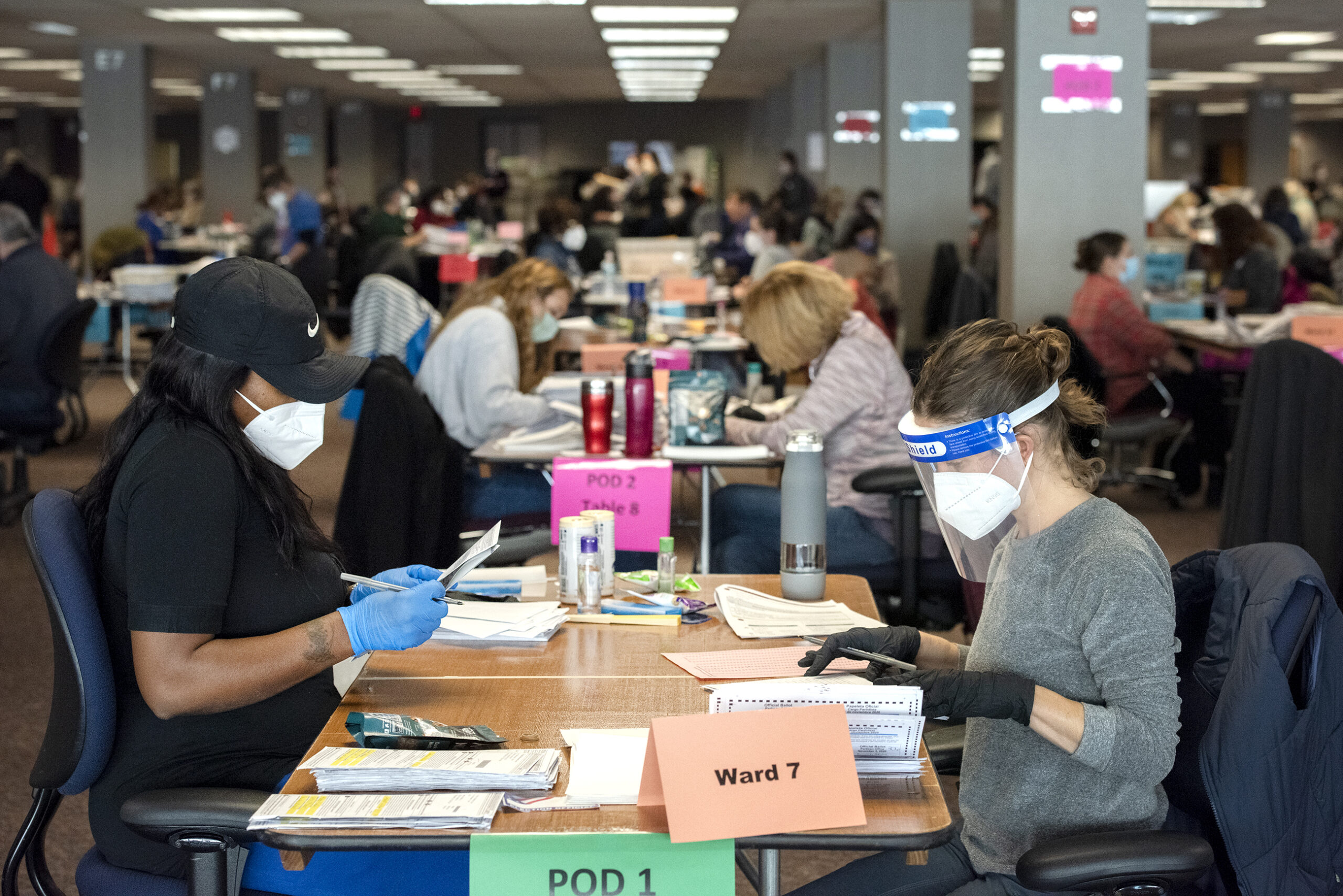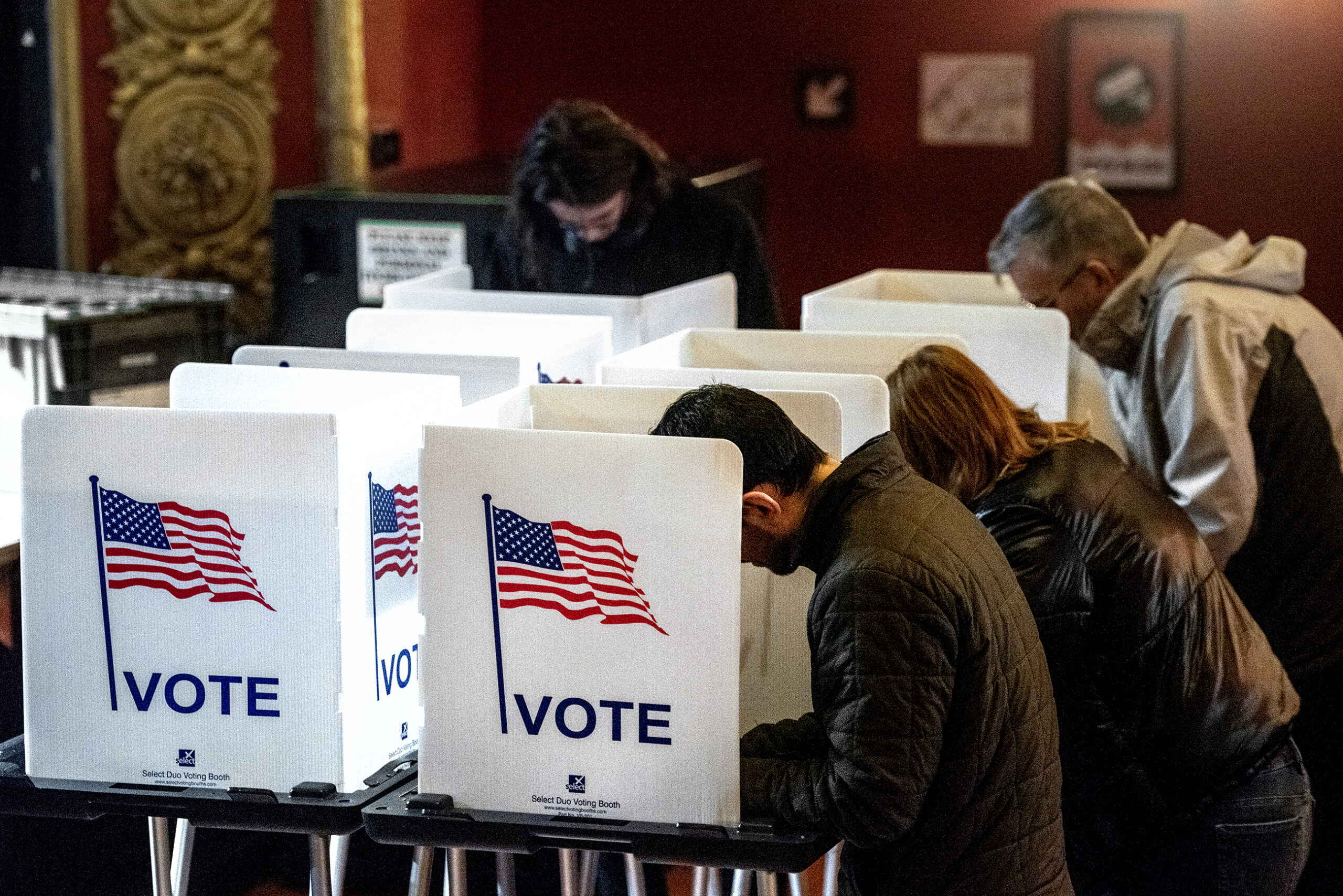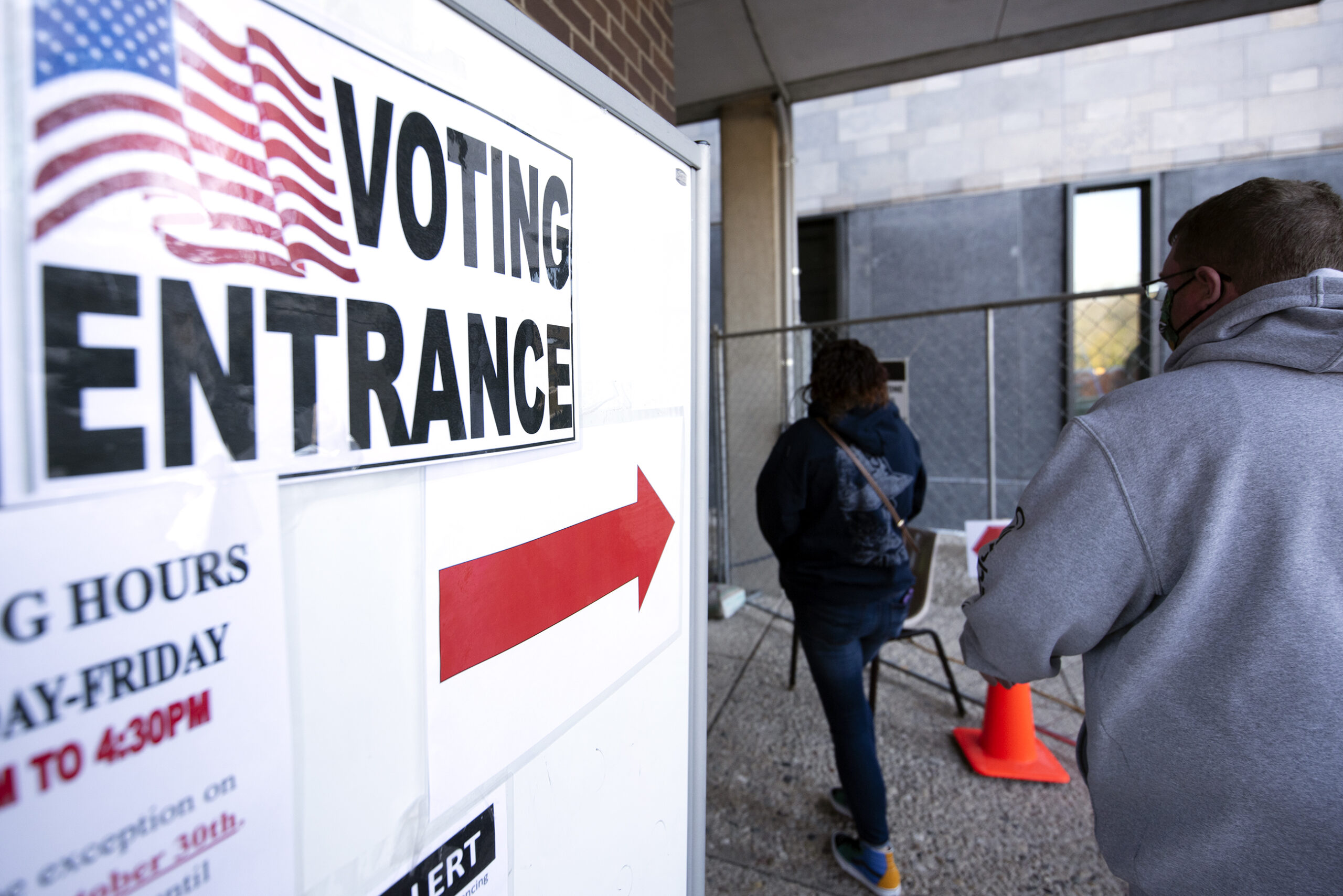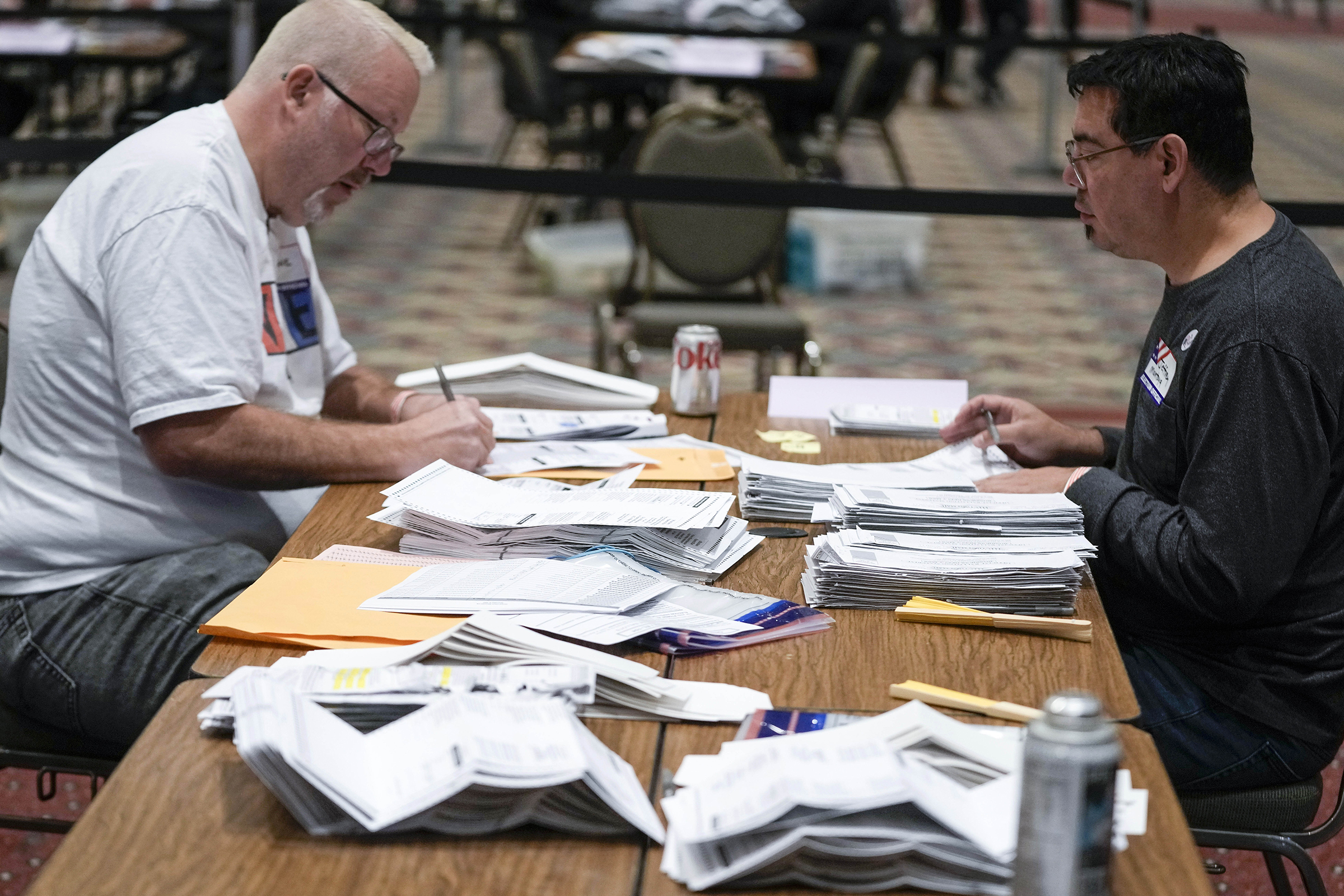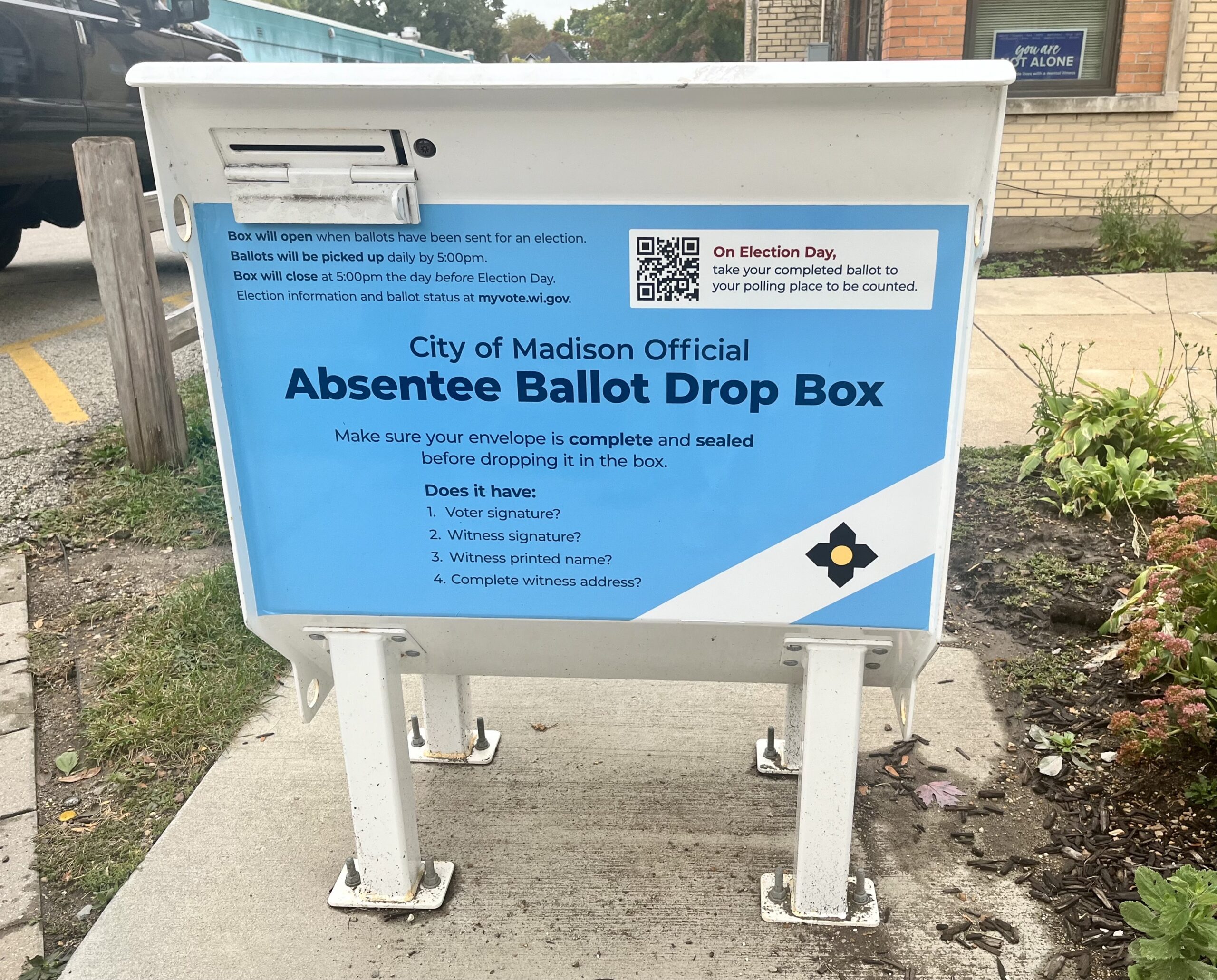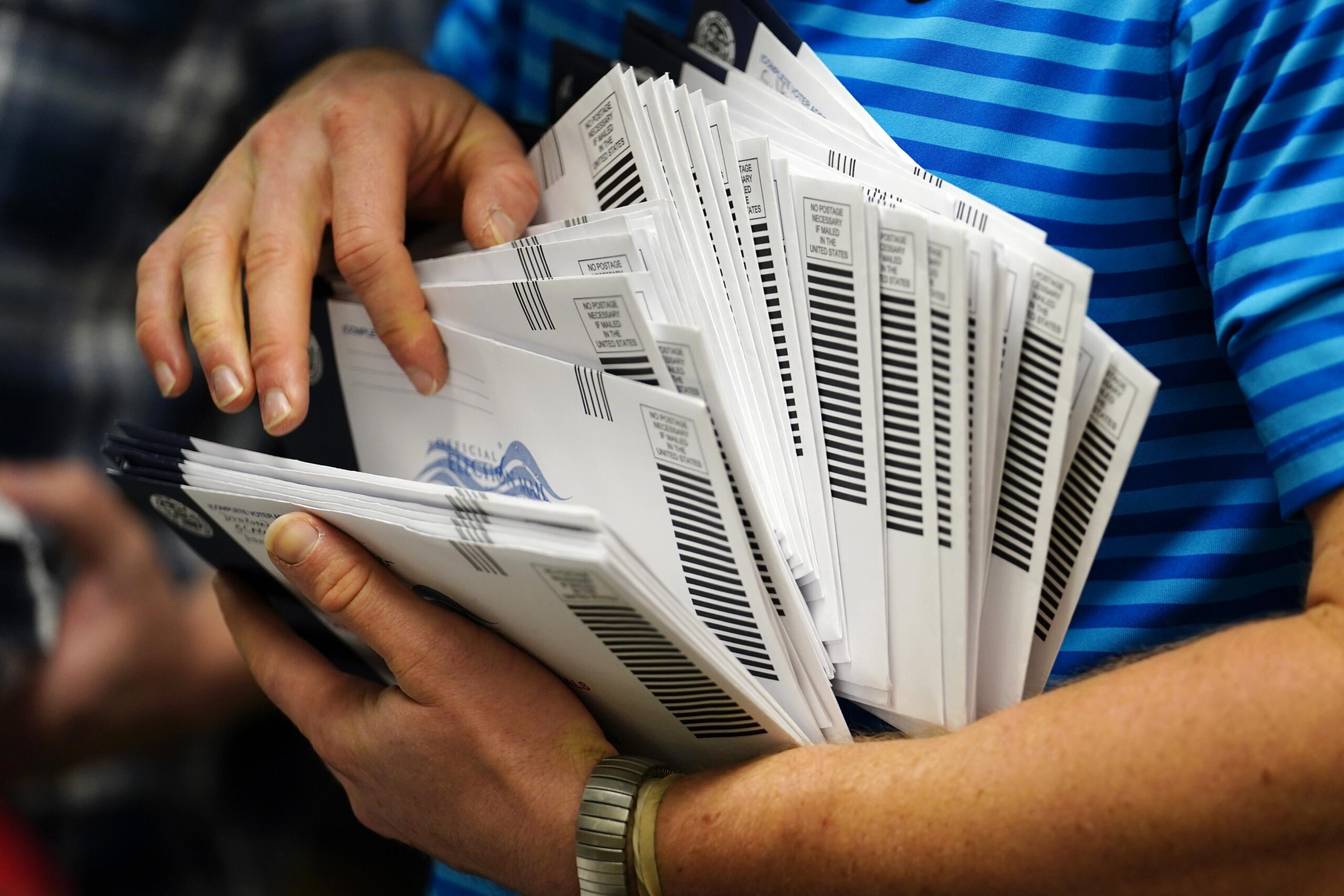The city of Milwaukee ended up with about 170,000 absentee ballots when polls closed Tuesday. As of 11:15 p.m., 140,000 of the ballots had been processed and election officials expected to have vote totals for the city by 3 a.m. Wednesday, said George Christenson, Milwaukee County clerk.
The in-person ballots cast Tuesday at Milwaukee’s 173 polling places were sent to Milwaukee County, which will report results online.
The absentee ballots for the 2020 election received by Monday night more than tripled the last presidential election’s 52,000 early votes. The total votes, both early and day-of, cast in Milwaukee for the 2016 presidential election was around 250,000.
News with a little more humanity
WPR’s “Wisconsin Today” newsletter keeps you connected to the state you love without feeling overwhelmed. No paywall. No agenda. No corporate filter.
When the final tally was released after 3:30 a.m., the total was 317,251 votes for Democratic nominee Joe Biden, and 134,355 for Republican President Donald Trump. The release of absentee ballots after nearly an all-night tabulating session gave Biden a narrow lead in the state as other municipalities finalized their tallies.
There are 4,000 poll workers in Milwaukee, including more than 400 vote-count workers who gathered on the fourth floor of a downtown building to sort, open and count ballots starting early Tuesday morning.
“This is the day we’ve been waiting for,” Milwaukee Mayor Tom Barrett said Tuesday morning. “It’s been a long haul.”
The team at Milwaukee’s Central Count, one of several locations around the county where municipalities send their absentee ballots to be sorted and recorded, is bracing for a long night, Barrett said Monday.
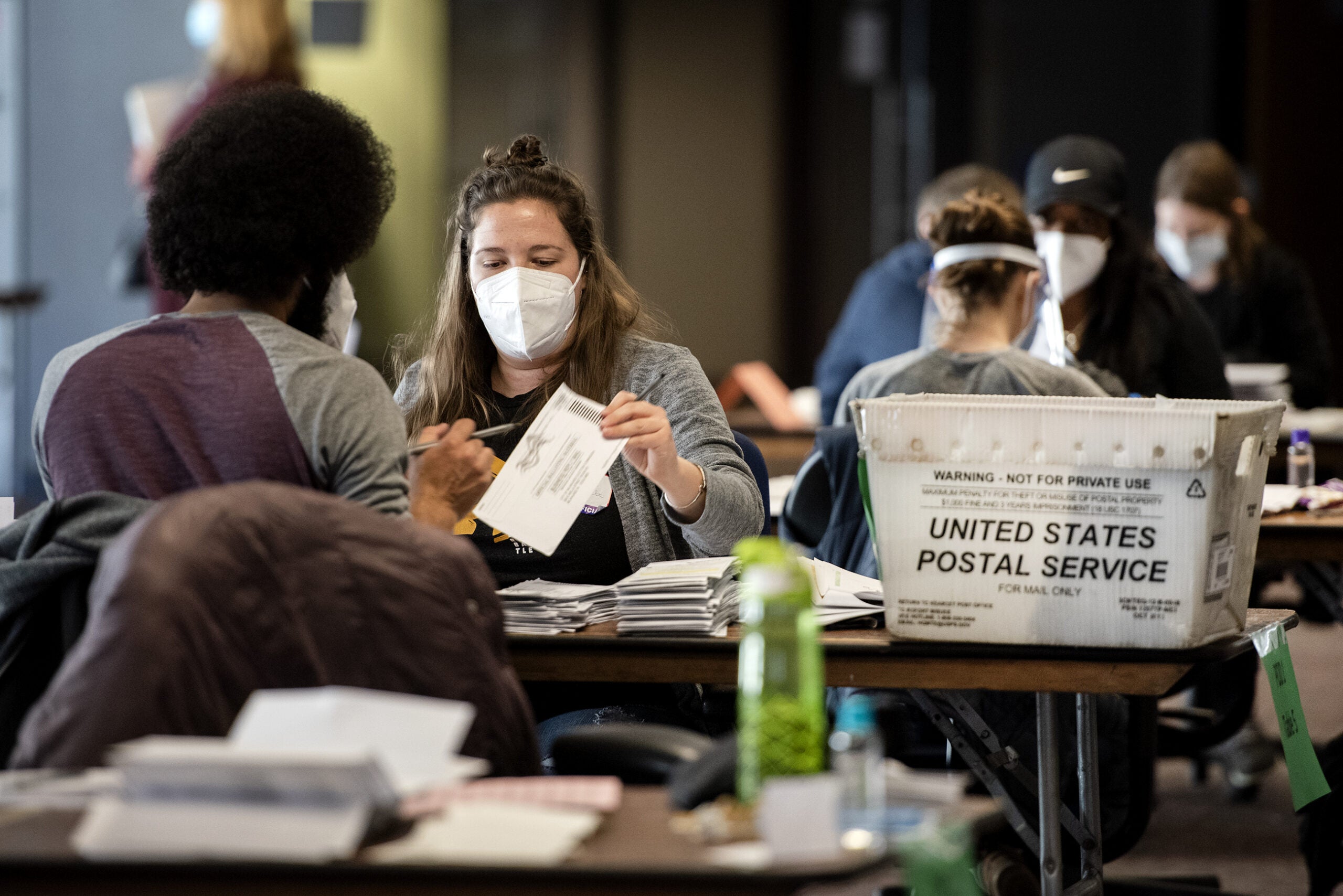
Milwaukee’s 173 voting sites open for Election Day were more than the 168 in August, and considerably more than the five that made international headlines in April. The city’s absentee ballot drop boxes closed at 7:30 p.m. Milwaukee voters could bring their absentee ballots directly to Central Count, located at 501 W. Michigan St., in Milwaukee until 8 p.m.
Barrett said there were some lines at Milwaukee polling places when they first opened at 7 a.m., though he said those ebbed quickly, and later most voting locations had little or no line.
“There’s a group of our residents who love to vote, a number of people who want to be in that first flurry, that 7 a.m. flurry,” he said. “Since then, it’s been rather manageable.”
Courting The Black Vote
Both parties are hoping to improve upon their performances in Milwaukee County from the 2016 election. Four years ago, President Donald Trump received 29 percent of the vote in the county. Democrat Hillary Clinton won the county by 288,989 votes, although that marked a decline from President Barack Obama who won by 328,000 votes in 2012.
Both parties have spent election season courting the Black vote in the area. According to U.S. Census estimates, turnout among Black voters in 2016 was down 7 percent nationally compared to 2012. But in Wisconsin, the drop off was 20 percent, according to a study by the liberal advocacy group Center for American Progress.
In February, the Republican Party of Wisconsin opened its first office in a predominately Black neighborhood of Milwaukee.
Four years ago, a group of community organizers formed BLOC — Black Leaders Organizing for Communities — to get Black voters re-engaged in politics and help Democratic candidates more meaningfully engage with the community.
On Tuesday night, BLOC’s political director, Rick Banks, said he believes the group’s efforts have been a success and Black voters went to the polls for Vice President Joe Biden.
“We had a very high number of absentee voters, and we’re still seeing a large number of folks turning out who are first-time voters today or who have not voted in years,” Banks said.
Banks believes turnout has more to do with getting rid of Trump than being excited about Biden. However, he does believe older voters, and people who are generally involved in politics, do like the former vice president’s politics.
“For younger folks, they’re not ‘Rah, rah Biden,’” Banks said. “It’s a similar thing to what played out in the 2018 election. Gov. (Tony) Evers was not an exciting candidate. It was more of a need to defeat (then-Gov.) Scott Walker.”
Waukesha Turnout
In Waukesha County on Tuesday there were some longer lines. Many voters at Wagner Park in Pewaukee waited between one and two hours to cast a ballot.
“I came here first thing in the morning and it was really long, and then I left, came back an hour later, it was still really long, so I went and ate breakfast, came back, it was still long, actually the longest I had seen it, almost out of the parking lot,” said Dan Miller. “The fourth time I was like, I’m just gonna stay and get in line.”
He said he’d been waiting about 50 minutes, and was still about a dozen spots away from the entry.
Tom and Sharon Lindner, who were voting to reelect Trump, said they’d been voting in the same polling place for every election of their 50 years living in the area, and had never seen such a long line. They’d been waiting for about an hour.
“Nice day, though,” Tom noted, and Sharon chimed in, “We can’t complain.”
Kevin Nangle, likewise, said he’d been voting at Wagner Park for all of his 17 years in the area, and always on Election Day. He’d been waiting about an hour and 10 minutes, and was a few spots ahead of Miller. Typically, he said, he’s not waited more than 20-30 minutes.
“I figured it might be a bit of a wait, but that’s OK, it’s worth doing,” he said. “This is a year where I think it’s time to stand up and be counted, it’s especially important this year — whichever side you’re on, I think it’s going to be important to you.”
At a press conference Monday, Waukesha County Clerk Meg Wartman said the county estimated about 57 percent of voters had cast their ballots early or absentee, and about 40 percent would be voting in-person on Election Day.
Back in Milwaukee, Woodall-Vogg said every worker scheduled to help process ballots at Central Count showed up Tuesday morning even though she and her staff had added some extras in preparation for potential no-shows. There are more than 400 workers in each of the three shifts, although the numbers will be cut late in the evening as the part of the process that requires a lot of staffing wraps up.
“Once we get all our ballots opened and voter numbers assigned, it really becomes a waiting game for our machines to process,” she said.
Woodall-Vogg said Milwaukee has 12 machines that can each process between 1,500 and 2,000 ballots per hour. Workers are paired up to review ballots together, and sorted into tables 6 feet apart. They’re then sorted into 12 bigger pods of people working on large batches of ballots who will minimize exposure to others outside their pods. The workers can raise bright yellow fans if they have questions about a ballot, and an election official will take a look.
Woodall-Vogg said as of 3 p.m., there hadn’t been any valid challenges to ballots.
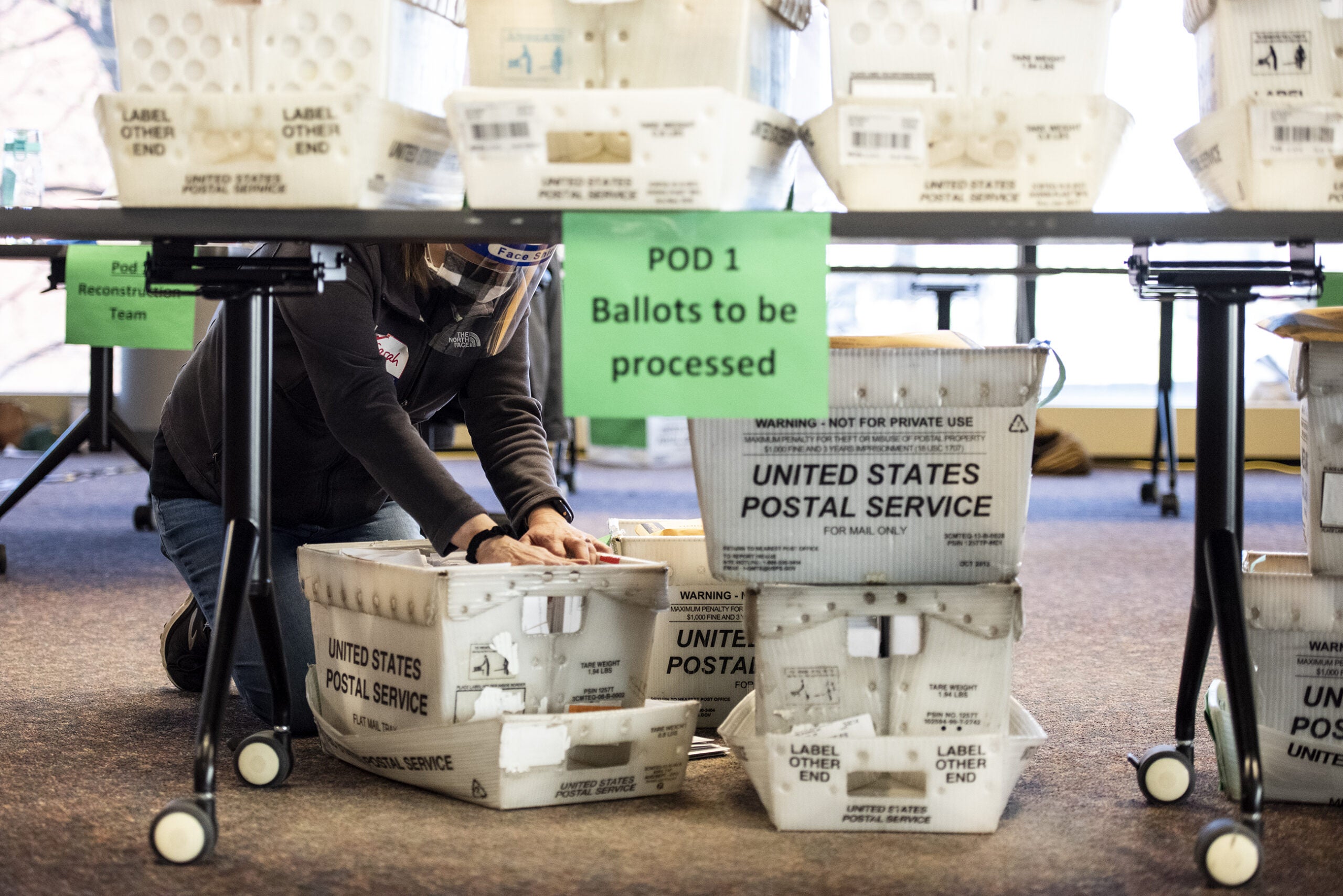
Milwaukee’s polling places were seeing fairly regular streams of voters, though not as many of the longer lines that dominated in April or at early voting sites around the country.
Ryan Klund, who cast his ballot at Neeskara Elementary School, said he was surprised by how quickly he got in and out.
“I was expecting there to be like a longer wait, but it was very easy,” he said.
He opted to vote in person on Election Day for the peace of mind.
“I looked at doing the mail-in ballot, but I’ve never done that before, so I was a little concerned,” he said. “It seems like if you do it in person, for sure your vote’s gonna be counted.”
Lieren Lawrence, a new Milwaukee resident who cast her first Wisconsin ballot on Election Day at the same elementary school, said the top of the ticket was the biggest draw for her this year.
“I want to know what’s going on, I don’t want information held back, I want to know and I want our leader to make sure that he’s putting a huge effort into helping Americans, and it seems like our current president isn’t doing that,” she said. “It’s super urgent that we vote for someone that’s going to actually take charge, and to help with COVID.”
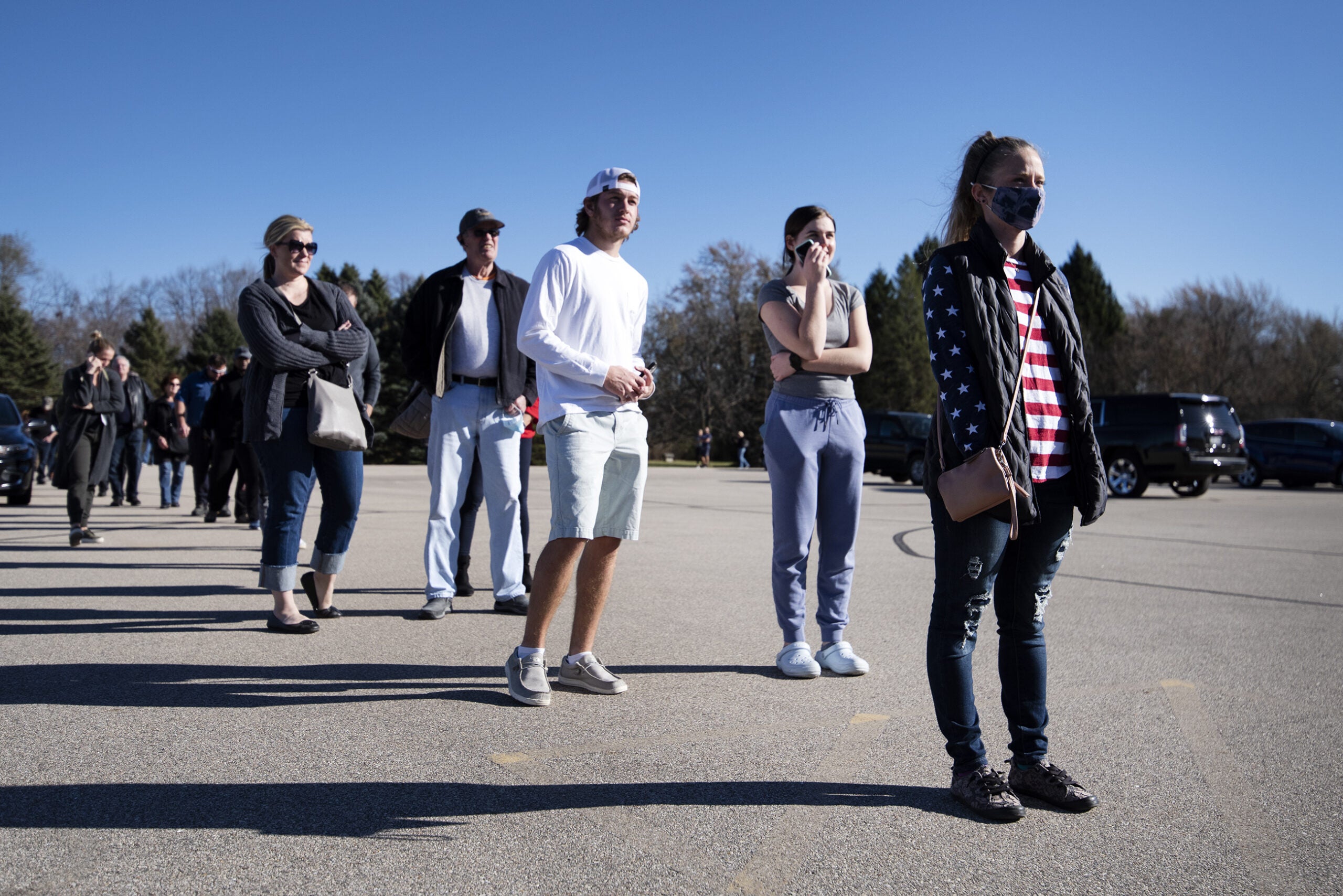
Voters in Pewaukee tell me the wait time at Wagner Park is about two hours. pic.twitter.com/btJRwkStZ7
— Angela Major (@angela_major_) November 3, 2020
Wisconsin Public Radio, © Copyright 2025, Board of Regents of the University of Wisconsin System and Wisconsin Educational Communications Board.

